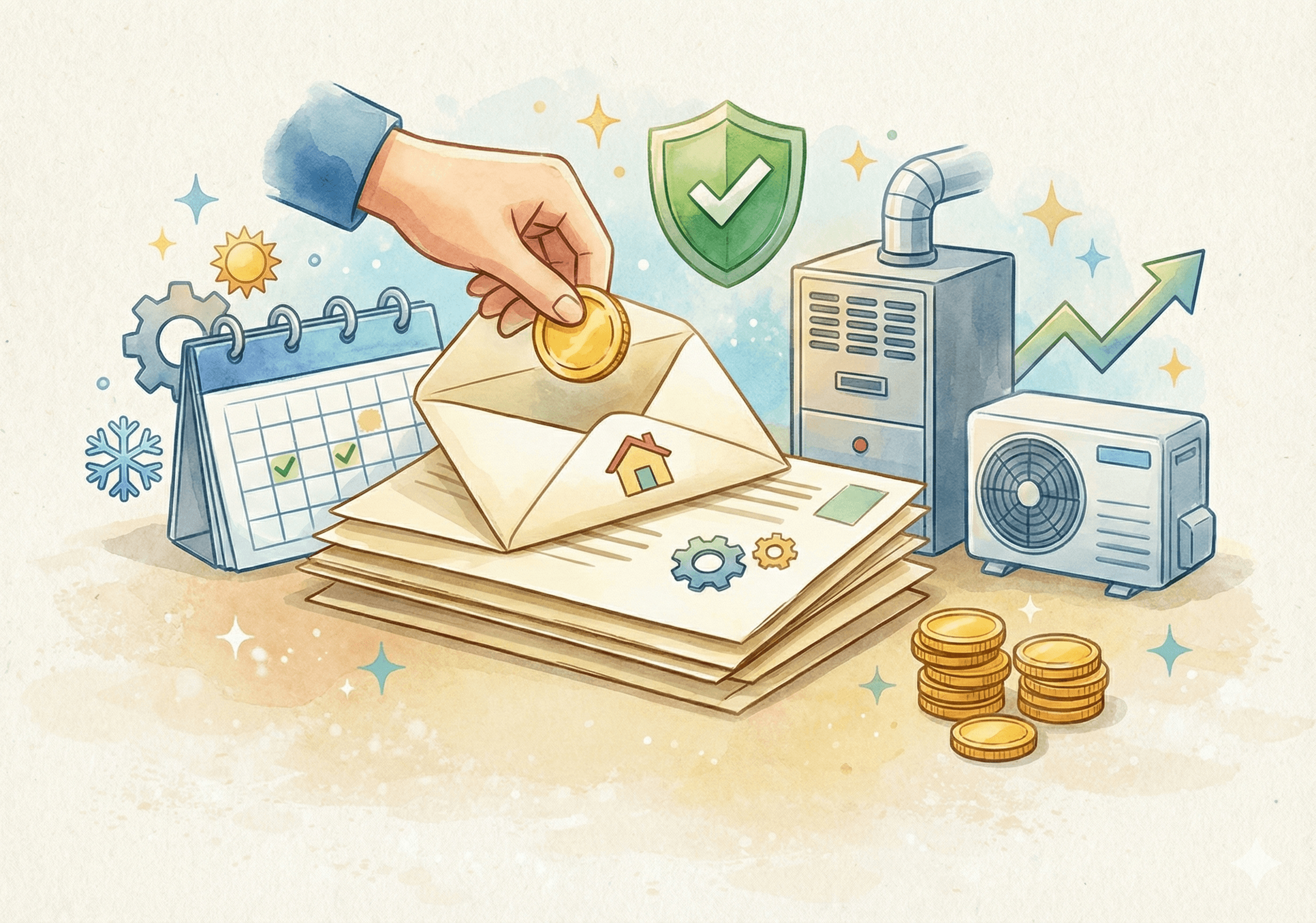How to Design Personalized Direct Mail Campaigns
March 4, 2025
Personalized direct mail works. It delivers higher response rates compared to non-personalized mail. With proper data and design, you can boost engagement by more than 70%.
Key Takeaways:
Use Customer Data: Segment by demographics, behavior, purchase history, and location.
Leverage Personalization: Include names, tailored offers, and dynamic content.
Combine Digital and Physical: Add QR codes, personalized URLs, and track responses.
Refine Campaigns: Measure response rates, conversion rates, and ROI to improve over time.
Direct mail is most effective when it’s personal, data-driven, and paired with online interactions. Start with clear goals, smart design, and accurate customer data for better results.
How to Improve Your Direct Mail Marketing (With Examples!)
Customer Data Analysis
Effective customer data analysis powers direct mail campaigns that deliver outstanding results.
Key Customer Data Categories
Creating personalized direct mail starts with gathering the right customer data:
Demographics
Name, age, gender
Address, phone, email
Household details
Income level
Education level
Purchase Patterns
Transaction history
Average order value
Favorite products
Shopping frequency
Seasonal buying trends
Behavioral Data
Website activity
Email interactions
Social media engagement
Customer service history
Responses to campaigns
Location Insights
Geographic location
Neighborhood data
Market conditions
Proximity to stores
In March 2023, Canon Solutions America's Direct Mail Marketing Team achieved a 135% increase in response rates by personalizing mail with recipient names in full color. Adding more detailed data pushed response rates up to 500% [2].
Methods to Collect Data
Digital Sources
Website forms
Purchase tracking
Email performance metrics
Social media activity
Offline Sources
POS transaction records
Service logs
Loyalty program data
In-store surveys
Best Practices for Data Management
Practice | How to Implement | Benefits |
|---|---|---|
Regular Updates | Refresh using NCOA every 90 days | Reduces returned mail, ensures accuracy |
Data Cleansing | Remove duplicates, standardize formats | Improves targeting and deliverability |
Security Compliance | Apply strong data protection measures | Builds trust, meets regulations |
Integration | Sync CRM with marketing tools | Creates unified customer profiles |
It's crucial to comply with data privacy laws. While federal regulations don't ban direct mail marketing, state laws like the California Privacy Rights Act (CPRA) can impose fines of up to $7,500 per violation [3].
To get the most out of your data, use tools like CASS certification, deduplication, and presorting. Then, segment your audience for even sharper targeting.
Customer Segmentation Methods
With accurate customer data, segmentation becomes a powerful tool for refining your direct mail targeting. It allows you to tailor messages to specific groups, improving campaign performance.
4 Main Segmentation Types
Using a mix of segmentation types can help you achieve better results:
Demographic Segmentation
Age, gender, and income level
Marital status and family size
Homeownership status
Education level and career
Geographic Segmentation
ZIP codes and carrier routes
Neighborhood traits
Urban, suburban, or rural areas
Proximity to business locations
Regional market trends
Behavioral Segmentation
Purchase history and frequency
Average order value
Interaction with your brand
Response to past campaigns
Customer lifecycle stage
Psychographic Segmentation
Lifestyle and personal values
Hobbies and interests
Shopping behaviors
Decision-making patterns
Here’s how segmentation can work in practice:
Segment Type | Personalization Focus |
|---|---|
New Prospects | Basic demographics and location |
One-time Buyers | Purchase history and demographics |
Loyal Customers | Behavioral and psychographic data |
Local Businesses | Geographic and firmographic details |
BirdseyePost Targeting Tools

BirdseyePost takes segmentation to the next level with its advanced targeting tools:
SmartMailers™ Integration
Syncs automatically with your CRM
Updates customer segments in real time
Tracks engagement across campaigns
Supports dynamic content personalization
Advanced Filtering Options
Combine custom segments
Set detailed targeting criteria
Build lookalike audiences
Exclude overlapping segments
These tools deliver results. For instance, ACME Financial Advisors saw their conversion rate jump from 1.2% to 4.7% in just three months by using targeted segmentation and direct mail tracking to follow up effectively.
To get started, follow these steps:
Begin with demographic data
Layer in behavioral insights
Add geographic details
Incorporate psychographic factors
Experiment with different combinations
Direct Mail Design Guide
Direct mail combines eye-catching design and advanced personalization to drive better engagement and response rates.
Design Standards
The physical format of direct mail demands smart design choices to grab attention instantly. Here are some key principles to follow:
Layout Basics
Position your offer in the upper-right corner to align with the natural "Z" reading pattern. Use a short, impactful headline (7 words or fewer) that focuses on customer benefits. Keep plenty of white space to avoid clutter and ensure text is easy to read with high-contrast typography.Visual Details
Work with high-resolution images (at least 1200 dpi) for sharp visuals. Stick to a maximum of two matching fonts for a clean look. Use your brand colors strategically to set the tone, and opt for simple, clean backgrounds that support your message.
A well-thought-out design sets the stage for leveraging modern personalization tools.
Technical Personalization Tools
Beyond visuals, technology-driven personalization can make your campaign even more effective:
Variable Data Printing (VDP)
VDP allows you to tailor content for each recipient. Studies show that including a person’s name and using full color in direct mail can boost response rates by 135%. Adding more detailed, database-driven personalization can lead to a response increase of up to 500% [2].Interactive Features
Add QR codes that link to personalized landing pages, or use unique tracking URLs to measure responses. Scratch-off areas can reveal individual offers, while location-specific maps and directions add convenience.Smart Integration Tools
BirdseyePost's SmartMailers™ technology takes personalization further with real-time data syncing, dynamic content updates, automated rules, and detailed response tracking and analytics.
Campaign Management
Running a successful direct mail campaign requires careful planning and tracking to get the best return on investment (ROI).
Steps to Set Up Your Campaign
Set SMART Goals
Define goals that are Specific, Measurable, Achievable, Relevant, and Time-bound. For instance, aim for a 15% conversion rate within 30 days.Build a Targeted List
Focus on customer details like demographics, purchase history, location, behavior, and recent interactions to create an effective mailing list.Add Tracking Tools
Use features like unique QR codes, personalized URLs, and intelligent mail barcodes to monitor responses.Verify Addresses
BirdseyePost’s address verification system helps clean up your list by removing duplicates, updating outdated information, validating delivery points, and ensuring USPS compliance.
Measuring Campaign Results
Once your campaign is live, track its performance using the following metrics:
Metric | What It Measures | Target Range |
|---|---|---|
Response Rate | Percentage of recipients who take action | 5-9% |
Conversion Rate | Percentage who complete the desired action | 1-5% |
Cost Per Acquisition | Campaign cost divided by conversions | $5-$30 |
ROI | Return on investment | 100%+ |
BirdseyePost’s analytics dashboard provides real-time data on:
Delivery confirmations
QR code response tracking
Conversion goal progress
Geographic trends in responses
A/B test performance
"In the field of marketing, the importance of sticking to best practices in direct mail can't be stressed enough. Truly effective campaigns are the ones grounded in meticulous planning and precise execution." - Lob [4]
Use these insights to refine your campaign. Adjust elements like messaging, design, calls-to-action, timing, and mailing lists as needed for better results.
Success Examples
Campaign outcomes show how thoughtful design, smart use of data, and proper timing can drive impressive results.
Campaign Results
Direct mail campaigns have proven effective in various industries:
KURU Footwear's Multi-Channel Impact: In 2023, KURU Footwear earned over $2 million and achieved a 10x+ ROI by targeting abandoned cart customers with personalized post-purchase postcards [6].
NatureBox's Reactivation Campaign: NatureBox sent 50,000 personalized postcards to lapsed customers, including reward balances, promo codes, and tailored recommendations. This effort led to a 35% increase in orders per customer, 60% higher revenue per customer, and an 8.9% redemption rate [5].
Bite Squad's Win-back Campaign: Bite Squad sent personalized postcards to 20,000 inactive customers, resulting in an 18% redemption rate, with 3,600 coupons redeemed [5].
Success Factors
Several factors contribute to the effectiveness of these campaigns:
Success Factor | Implementation Strategy | Impact |
|---|---|---|
Precise Timing | Send mailings within 21 days of trigger events | Aligns with best practices for engagement [8] |
Data Integration | Connect CRM data with direct mail automation | Mail achieves about a 50% read rate vs. 3% for digital [5] |
Personalization | Include customer-specific details and offers | Boosts purchase likelihood by 80% [8] |
Cross-Channel Approach | Combine direct mail with digital touchpoints | Drives 92% of recipients to online activity [7] |
Timing and Frequency: The Direct Marketing Association suggests a 21-day gap between mailings to track responses effectively while keeping customers engaged [8].
Data-Driven Personalization: Fresh City demonstrated success by targeting email non-responders with personalized URLs, achieving a 113% ROI within 30 days [5].
Clear Value Proposition: Campaigns that offered personalized rewards, custom promo codes, targeted product suggestions, and time-sensitive offers consistently delivered strong results.
These examples highlight how targeted and personalized direct mail can significantly boost engagement and ROI.
Conclusion
Personalized direct mail can increase response rates by up to 135%, boost client engagement by 70%, and improve conversion rates by as much as 50% compared to generic campaigns [1].
Its success depends on a few critical factors:
Using Data Effectively: Targeting and segmenting your audience based on detailed customer data.
Going Beyond Basics: Personalizing beyond just names - think tailored offers and dynamic, relevant content.
Blending Digital and Physical: Adding QR codes or personalized URLs (PURLs) to connect mail with digital experiences.
Improving Over Time: Monitoring performance and using feedback to refine your campaigns.
AI-powered automation now makes it easier to manage everything from audience selection to personalized designs, all while keeping the personal, tangible feel of direct mail intact [9].




